Apple Announces 5nm A14 SoC - Meagre Upgrades, Or Just Less Power Hungry?
by Andrei Frumusanu on September 15, 2020 4:30 PM EST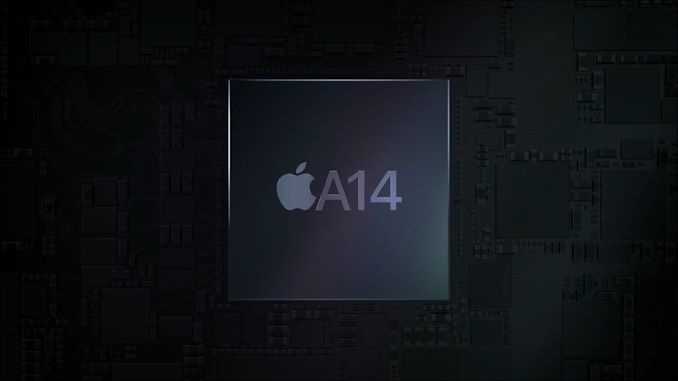
Amongst the new iPad and Watch devices released today, Apple made news in releasing the new A14 SoC chip. Apple’s newest generation silicon design is noteworthy in that is the industry’s first commercial chip to be manufactured on a 5nm process node, marking this the first of a new generation of designs that are expected to significantly push the envelope in the semiconductor space.
Apple’s event disclosures this year were a bit confusing as the company was comparing the new A14 metrics against the A12, given that’s what the previous generation iPad Air had been using until now – we’ll need to add some proper context behind the figures to extrapolate what this means.
On the CPU side of things, Apple is using new generation large performance cores as well as new small power efficient cores, but remains in a 2+4 configuration. Apple here claims a 40% performance boost on the part of the CPUs, although the company doesn’t specify exactly what this metric refers to – is it single-threaded performance? Is it multi-threaded performance? Is it for the large or the small cores?
What we do know though is that it’s in reference to the A12 chipset, and the A13 already had claimed a 20% boost over that generation. Simple arithmetic thus dictates that the A14 would be roughly 16% faster than the A13 if Apple’s performance metric measurements are consistent between generations.
On the GPU side, we also see a similar calculation as Apple claims a 30% performance boost compared to the A12 generation thanks to the new 4-core GPU in the A14. Normalising this against the A13 this would mean only an 8.3% performance boost which is actually quite meagre.
In other areas, Apple is boasting more significant performance jumps such as the new 16-core neural engine which now sports up to 11TOPs inferencing throughput, which is over double the 5TOPs of the A12 and 83% more than the estimated 6TOPs of the A13 neural engine.
Apple does advertise a new image signal processor amongst new features of the SoC, but otherwise the performance metrics (aside from the neural engine) seem rather conservative given the fact that the new chip is boasting 11.8 billion transistors, a 38% generational increase over the A13’s 8.5bn figures.
The one explanation and theory I have is that Apple might have finally pulled back on their excessive peak power draw at the maximum performance states of the CPUs and GPUs, and thus peak performance wouldn’t have seen such a large jump this generation, but favour more sustainable thermal figures.
Apple’s A12 and A13 chips were large performance upgrades both on the side of the CPU and GPU, however one criticism I had made of the company’s designs is that they both increased the power draw beyond what was usually sustainable in a mobile thermal envelope. This meant that while the designs had amazing peak performance figures, the chips were unable to sustain them for prolonged periods beyond 2-3 minutes. Keeping that in mind, the devices throttled to performance levels that were still ahead of the competition, leaving Apple in a leadership position in terms of efficiency.
What speaks against such a theory is that Apple made no mention at all of concrete power or power efficiency improvements this generation, which is rather very unusual given they’ve traditionally always made a remark on this aspect of the new A-series designs.
We’ll just have to wait and see if this is indicative of the actual products not having improved in this regard, of it’s just an omission and side-effect of the new more streamlined presentation style of the event.
Whatever the performance and efficiency figures are, what Apple can boast about is having the industry’s first ever 5nm silicon design. The new TSMC-fabricated A14 thus represents the cutting-edge of semiconductor technology today, and Apple made sure to mention this during the presentation.
Related Reading:
- The Apple iPhone 11, 11 Pro & 11 Pro Max Review: Performance, Battery, & Camera Elevated
- The Samsung Galaxy S20+, S20 Ultra Exynos & Snapdragon Review: Megalomania Devices
- TSMC Expects 5nm to be 11% of 2020 Wafer Production (sub 16nm)
- ‘Better Yield on 5nm than 7nm’: TSMC Update on Defect Rates for N5


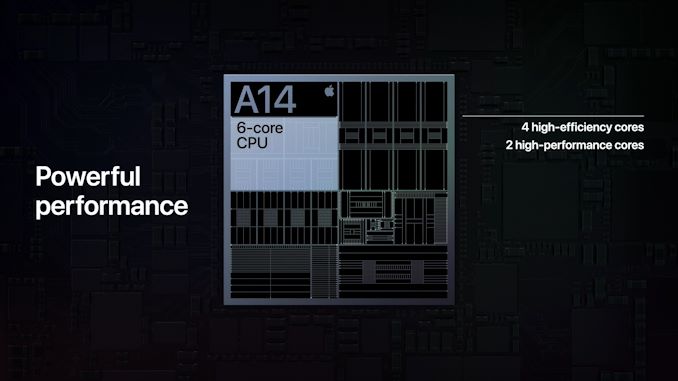
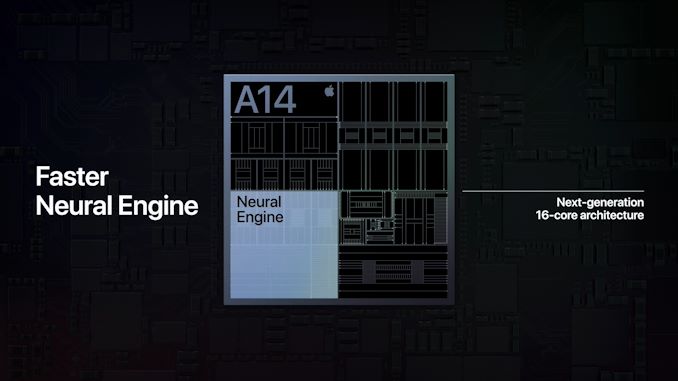
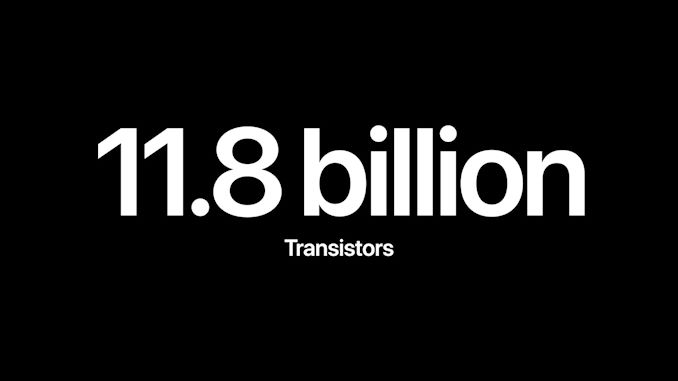
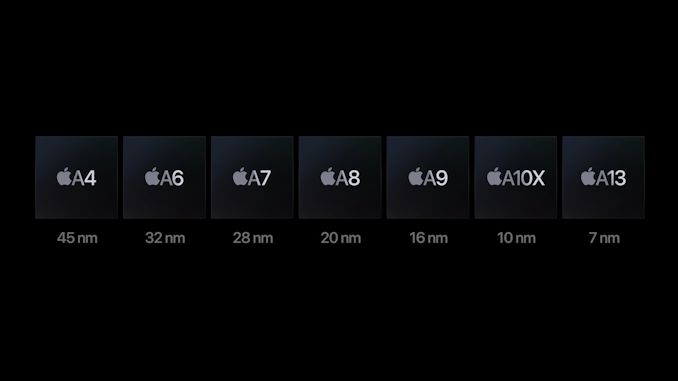








127 Comments
View All Comments
NextGen_Gamer - Tuesday, September 15, 2020 - link
You are right, it is noted quite clearly in the press release. I must have missed that during the conference! That is a little disappointing then - this would be the smallest performance increase on both the CPU & GPU side of things since Apple started making their own A-series SoC's.Jaianiesh03 - Wednesday, September 16, 2020 - link
I don't think we should rush to conclusions just yet anyway. Apple's performance figures don't make sense to me because their a12 performance figures for the regular iPad were also wrong. They claimed 40% performance from a12 to a10 whereas in the context of their own figures from the iphone launches (X and Xs) 1.15x1.25=44%. I believe apple just added 25+15=40 for the a12 in the ipad. Similarly here they just added 20(A13)+20=40 for the iPad air. We should expect at least 20 percent improvement announcement over the A13 in their iPhone 12 keynote. We also have to keep in mind that they claimed 15% for the A12 which turned out out to be 20% in Geekbench 5 and 25% in spec2006. Do you think that maybe the reason @Andreif7firewolfsm - Tuesday, September 15, 2020 - link
It may be that they simply wanted to save die area/money this generation.tipoo - Tuesday, September 15, 2020 - link
You don't spend 11 and a half billion transistors on a bleeding edge foundry trying to save money, the transistors are there, it's just not applying to major CPU and GPU bumps over the A13 this year.Gondalf - Wednesday, September 16, 2020 - link
Looking the performance increase over last generation, IMO a good portion of these billions of transistors are simply in place for backup, to increase the yields at decent levels.This is one of the more popular strategies to have more good dies on a wafer.
name99 - Tuesday, September 15, 2020 - link
I think it's too early to draw any conclusions.(a) They may want to make more of a big deal about "our CPU/GPUs are the best" at the Mac release than now. So they say some vague words and that's it.
(b) On the CPU side if we have a big performance increase in SVE/2 and AMX, that won't show until SW is recompiled. So obviously that needs new XCode to be released, but again it may be something they're holding off till the Mac event.
(c) GPU number I think HAS to be a mistake or misunderstanding in the phrasing. I mean, iPhone11 vs iPhone XS GB5 Compute number is already 40%: 6500 vs 4600.
They might just conceivably stay flat for the sake of a more realistic sustained performance, but they aren't going to go backwards!
Presumably post announcement we'll start to see GB numbers in the wild soon, at which point we can recalibrate.
name99 - Tuesday, September 15, 2020 - link
TRIGGER WARNING Far out speculation:One of the things they boast about (but gave no details) is "Advanced Silicon Packaging".
Is it possible they put something like HBM in there, alongside the DRAM, as a tentative first experimental step? And the calibration to automatically steer data between the HBM and the DD5 is still far from perfect?
I agree HBM on this class of devices doesn't necessarily make sense, but maybe it makes sense in terms of power, and while Apple wouldn't go backwards for no reason, they might have effectively gone backwards as a hiccup in rolling out this new tech?
Andrei Frumusanu - Tuesday, September 15, 2020 - link
Their packaging mention probably refers to to InFO, which they had for some time.name99 - Tuesday, September 15, 2020 - link
You think they will still be calling that out after so many years? I'm hoping it refers to more than A10 technology!tipoo - Tuesday, September 15, 2020 - link
AMX extensions were added in the A13 last year fyi